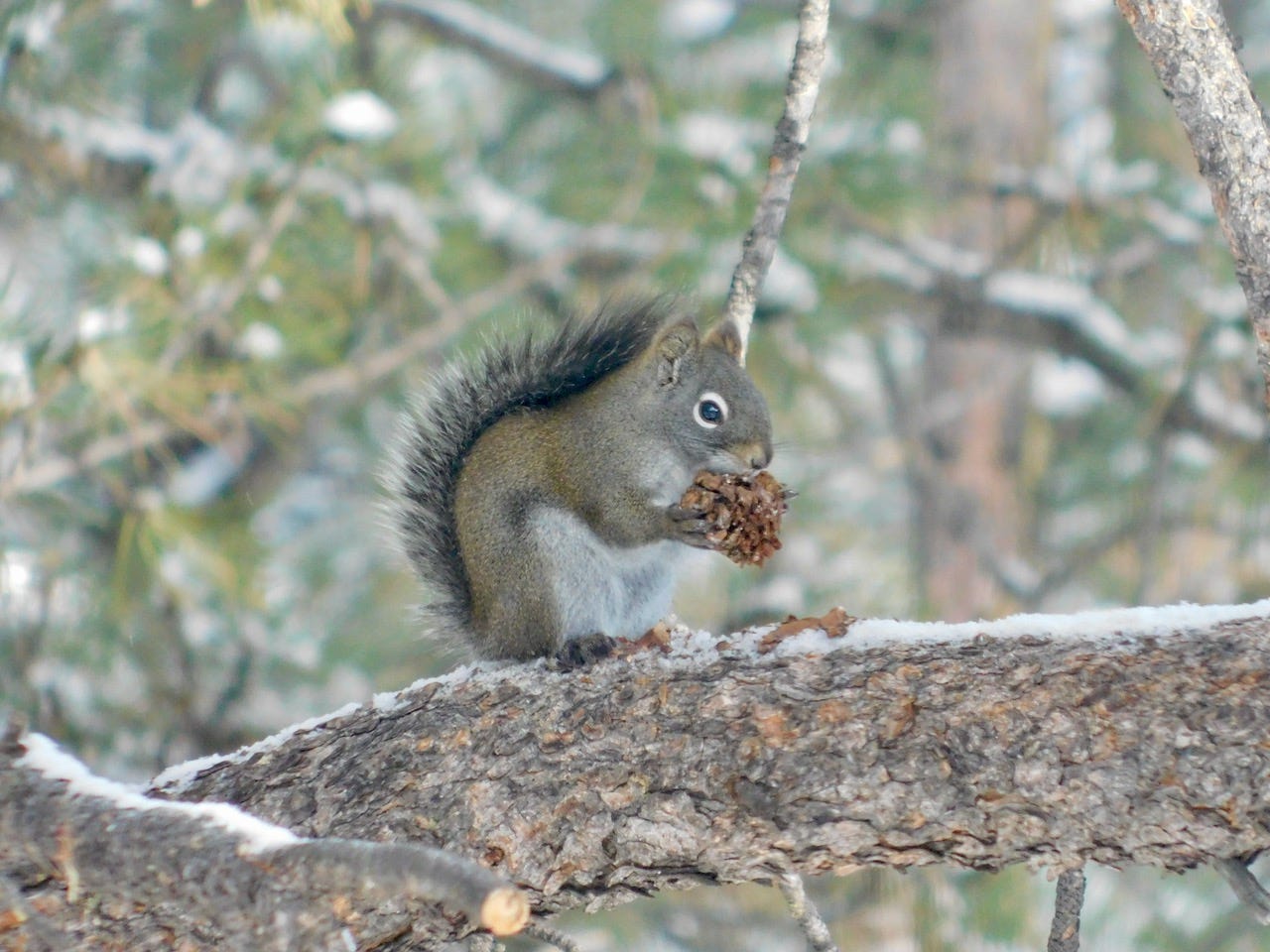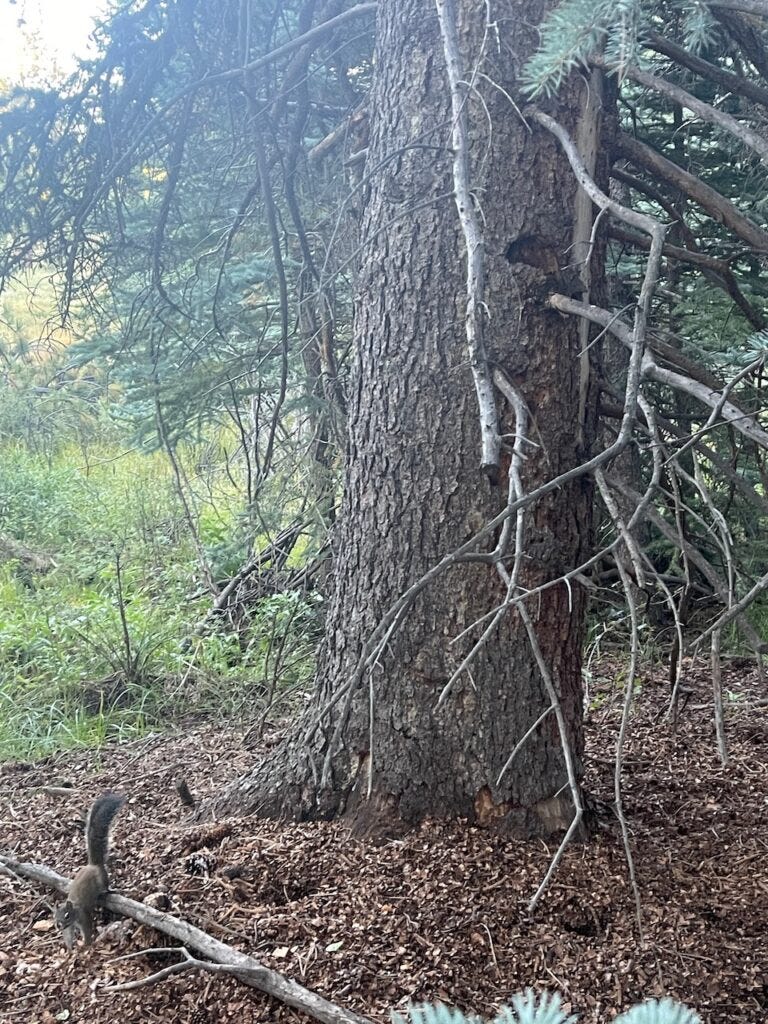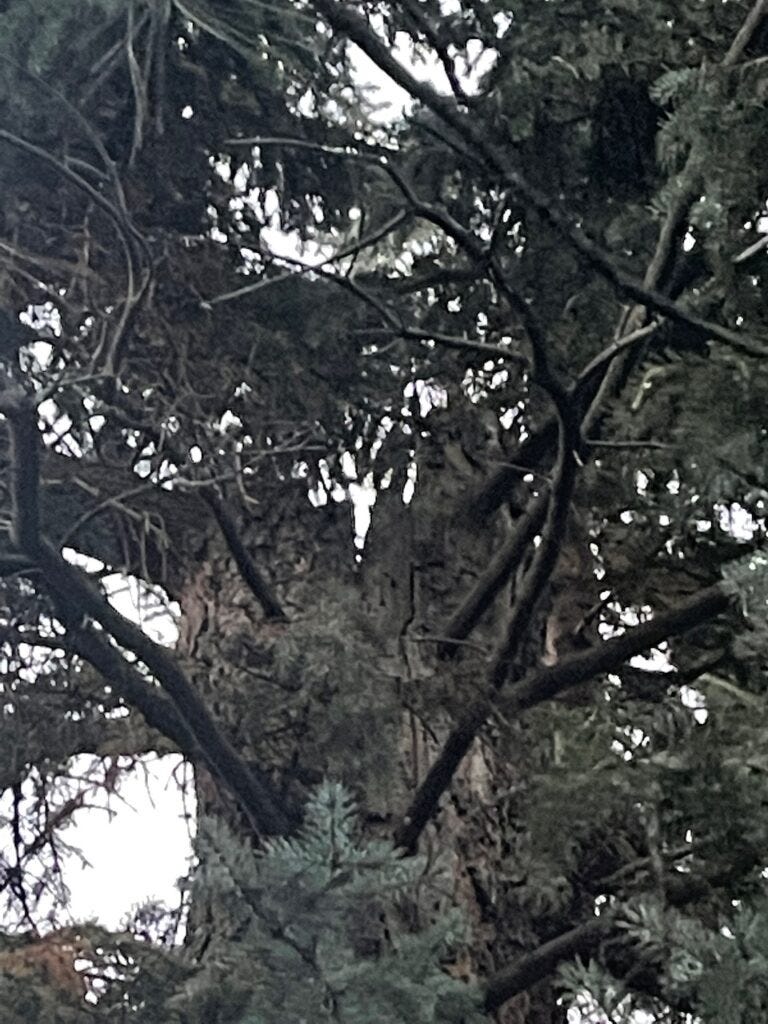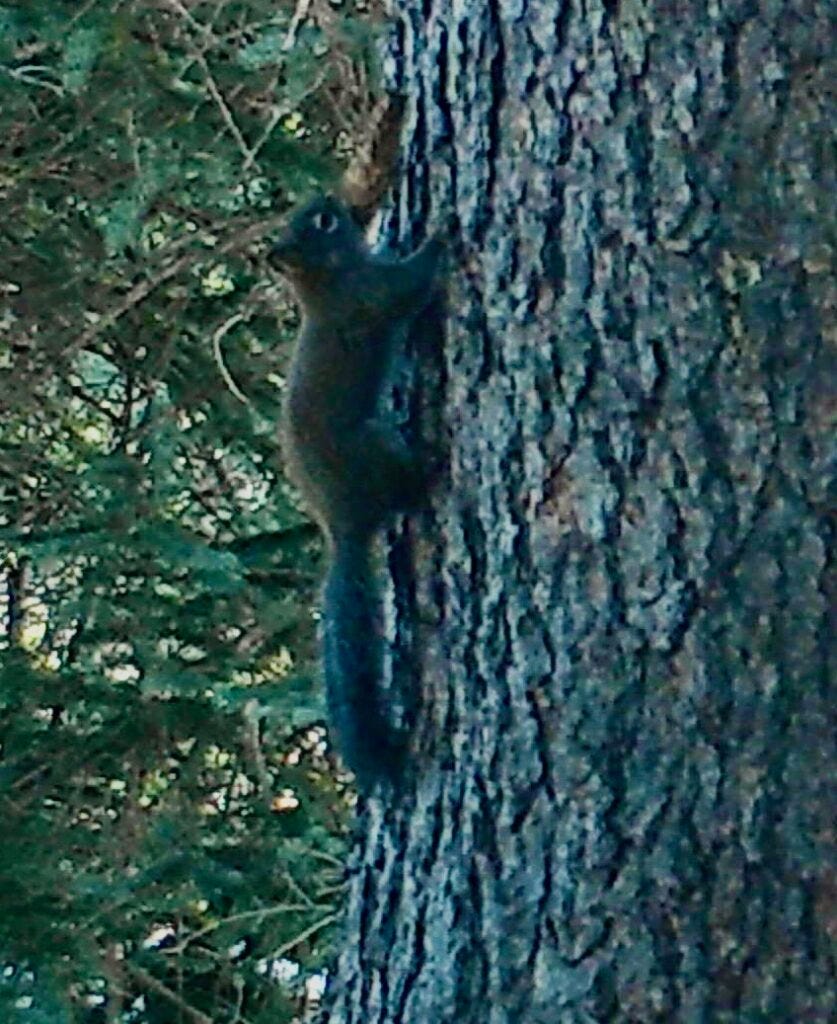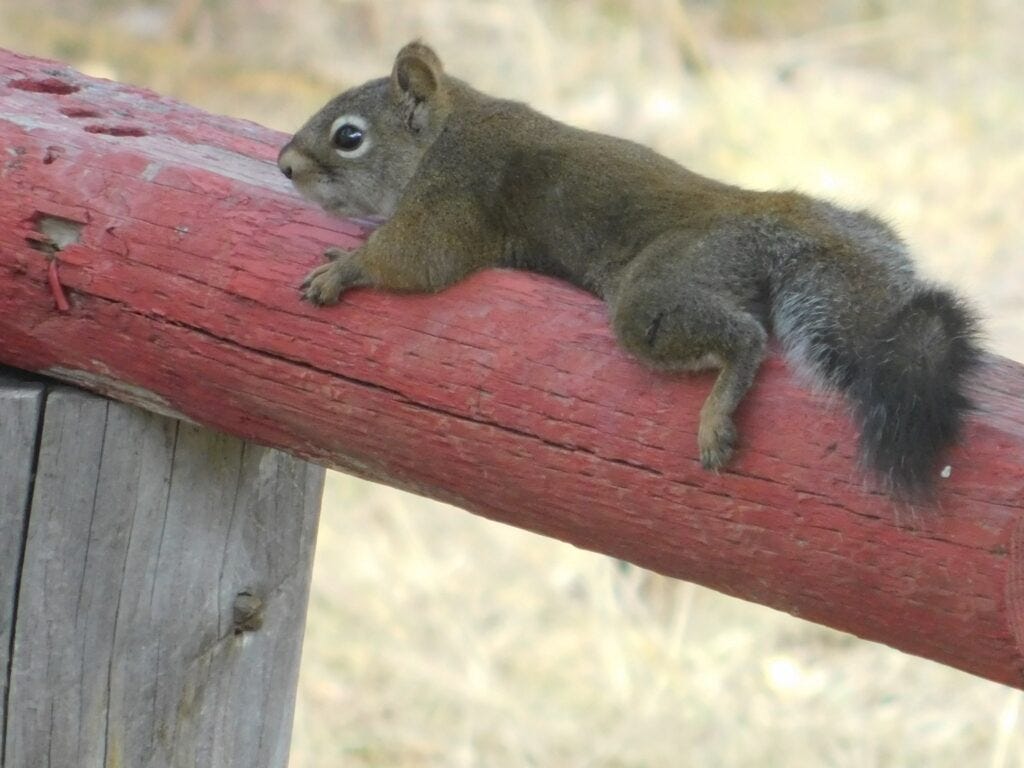The Midden
In a stand of Blue Spruce trees, the largest is surrounded by a ring of smaller, younger trees, making a shaded cove. The large tree in the middle, at a 2-foot diameter, is possibly over 250 years old. While certainly still alive, it bears the many scars of old age. Take a few steps back and look up. The top is broken off about 25 feet up. Perhaps it blew off in a storm or likely exploded off when hit by the lightning strike that ran the length down to the ground on its southern side. Drop your gaze down to the base four feet of the tree’s height, notice the bark pulling away from the trunk, and there, see the several critter-sized holes. And there also, see the little Pine Squirrel who lays claim to this palatial squirrel mansion. Drop your gaze further to the ground and you will see a deep pile, 1-2 feet deep (some are up to 4 feet deep!), of pinecone scales surrounding the base of the tree, dotted with little entrance tunnel holes. This is a little squirrel’s midden.
The little Pine Squirrel (Tamiasciurus hudsonicus) is also called a Red Squirrel or Chickaree. They measure a whole 7 inches long nose to rump with another 6 inches of fluffy tail. A distinguishing feature is a white ring of fur around their eyes giving them a very expressive face. Tamiasciurus, is a Greek term for ‘hoarding squirrel’. No exaggeration here, that describes this little guy perfectly. Not only is this whole pile his, but he also spends all his time fiercely defending it. We’ve often called them the Chihuahuas of the squirrel world. Small, but mighty, chasing off, loudly chattering, scolding, any person, or worse, any thieving creature that comes near. Many mornings, we wake up to the long chatter complaint of a pine squirrel warning whoever got too close to their midden.
What makes a midden worth all this effort? At first look, it’s just a refuse heap of pine cone parts after the seeds have been chewed out and dined on. However, the deeper the pile gets, the cooler and more moist the bottom layer of it is, a squirrelly humidor of their own. (It sounds like they should be wearing little British suits and puffing on pipes). Perfect for stashing pinecones that have not opened yet. These conditions keep the cones preserved by preventing them from opening and releasing their seeds. The cones get packed in snugly, point down, and can last for a couple of winters depending on the abundance of cones to be found. Some years are ‘mast years’ with an excessive amount of cone production by the trees. Middens then are always located where there is a good amount of productive trees in the area for the taking. Since a squirrel can consume over 50 cones a day, sometimes twice that, this ‘larder hoard’ needs to remain well stocked. There is treasure and territory to be defended!
When they aren’t eating the pinecone seeds, they are stashing the cones. Sure, they eat a wide variety of other foods when available such as insects, berries, bird seed, nuts, and even bird eggs, but the pinecones are the food that can be stored. The little pine squirrel is seemingly in constant motion, by the work of hauling cones and the emotional, revved-up anxiety state of trying to keep its midden intact. One encounter we watched was a Clark’s Nut Cracker bird actively stealing Pine’s cones and little Pine exhausting himself futilely chasing after the bird, chattering and scolding the entire time. He would not give up and the bird seemed to keep going for the sheer joy of just messing with him. The pictures below show a Clark's Nutcracker stealing from Pine's stash and Pine, exhausted from chasing him.
Other times, it is a bear that raids the larder during their ‘fat bear season’ in the Fall. They know the cones are there and the digging is easy. After this, the repair and restocking keep Pine at work non-stop.
It is the lucky squirrel that has a midden though. A sizable midden is often passed on to several generations of squirrels, not necessarily of the same family, but whoever finds it after its owner has died of natural causes or predators. It really is only about a 35% chance that a squirrel born will live long enough and be lucky enough to gain territory and a midden. Pine Squirrels are generally solitary creatures and not known for helping each other out. It can be a hard and exhausting life with no retirement plan, but an inheritance for the next squirrel to come along.
Little Pine Squirrel, though, is doing his part in overall forest health. He operates in forests of older growth, those that are mature enough to produce the seeds. His efforts will spread those seeds past the main season of the trees dropping them. He is an agent of forest regeneration, a part of the overall, interconnected processes that make up the forest as a whole. Albite, a loud and rowdy one.
Sources:
- https://northernwilds.com/squirrel-middens
- https://northernwoodlands.org/outside_story/article/red-squirrels-midden
- https://naturallycuriouswithmaryholland.wordpress.com/2015/10/16/red-squirrels-making-middens/
- https://wildlife.org/found-middens-give-squirrels-a-helping-hand/
- https://wildlife.org/found-middens-give-squirrels-a-helping-hand/
- https://jhwildlife.org/mast-years-and-middens-central-to-red-squirrel-survival/





